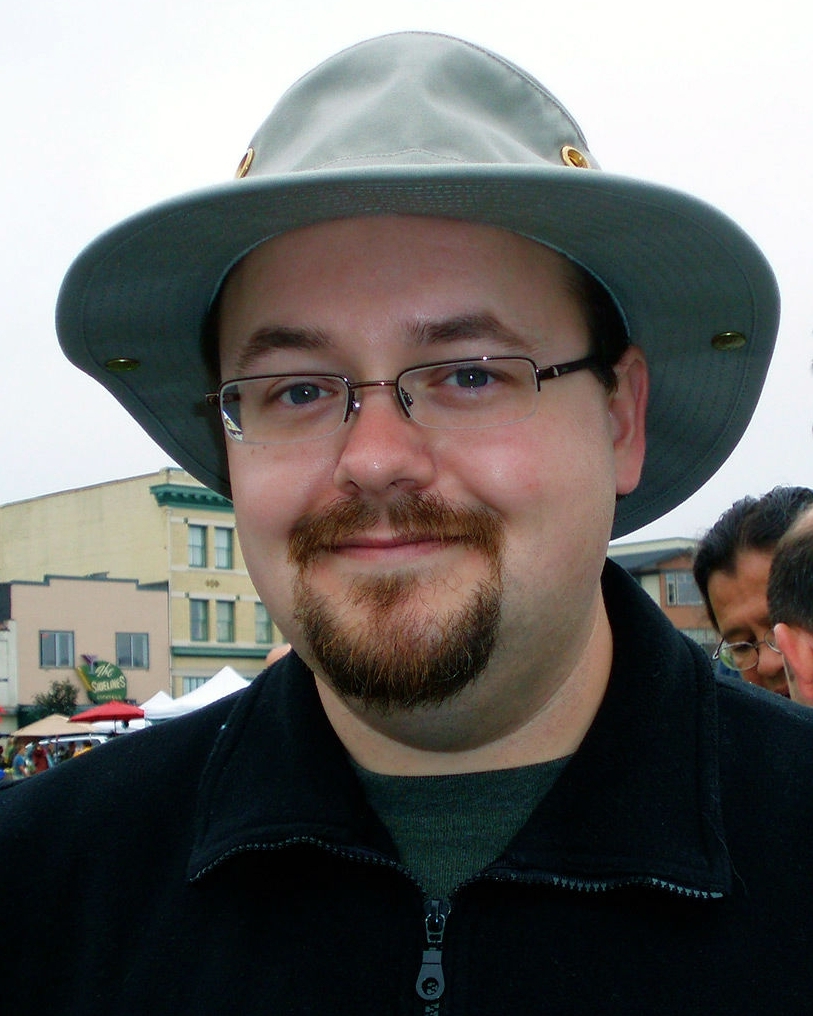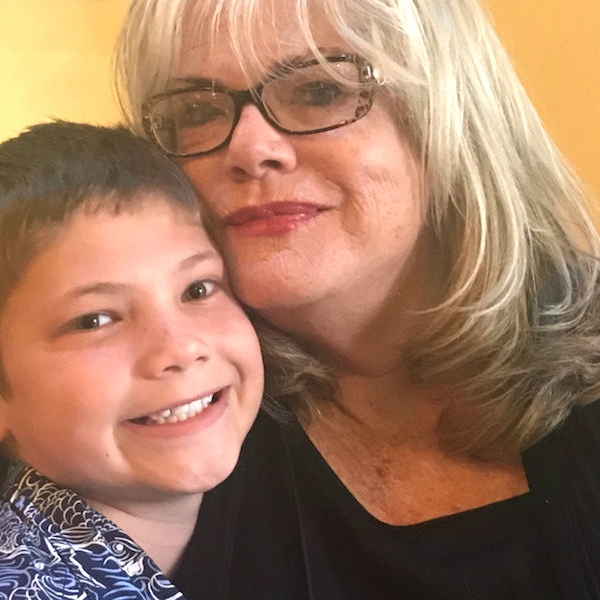There’s a renaissance man in our midst, here at Vibe.
He makes technical magic happen; dabbles in linguistics; strikes a chord with musical musings; applauds Steve Martin (LA Story is one of his favorite movies of all time); embraces the nomad within; and crafts emulators for the fun of it. And when asked to describe himself, Vibe Founding40 member Seth Morabito says, “I’m passionate about learning. I always want to learn more.”
Mild-mannered with merry eyes, Seth alternates between being amusing and looking amused. He’s fond of absurdism and it shows.
Seth is at home in Joshua Tree cactus circles and has got a flair for hats. “Is that a Fedora you’re wearing?” “This one is a Tilley that I picked up somewhere in California. I don’t tend to wear hats except in cold weather, but I sure do like them!”
“I’m an absurdist. My favorite comedy act is probably Monty Python. These days, it’s stand-up comedian Patton Oswalt.”
A born and bred San Franciscan, Seth migrated north to Poulsbo three years ago, leaving behind all that is Bay Area (“a high-tech rate race”). He’s now a senior software engineer, working remotely for Cambridge, MA-based Akamai Technologies, following stints at Stanford University and Glyde Corporation.
Seth also launched Loom Communications in 1995, a contracting and software development company that’s home to his long-running blog.
“I got my start in software by building web pages at Cornell University,” Seth explains. “More recently, my focus has been on building scalable solutions to business problems using the best evolving technologies for the job. I’m partial to program design and architecture.”
In fact, Seth’s an explorer of the software landscape—yesterday’s and today’s. We’re not just talking about core technologies; we’re talking the big puzzles surrounding technologies of the past, recapturing them through emulation. That means running old software through mimicking the hardware of yesteryear.
“In a way, I’m kind of a historian. I’ve always been interested in the history of computers. It’s where I spend a lot of my time.”
From gigabytes to breakfast bites, get a step closer to the heart and mind of a fella who loves his craft and his calling.
How did you make your way to Poulsbo from San Francisco?
Seth: Friends on Bainbridge. During some of my trips up here to visit, I fell in love with the Kitsap Peninsula. It’s more, well, homey I guess is the right word.
Tell me about your blog. What’s the impetus behind it?
Seth: I like to share and recount my investigations into the lifecycle of programming and its products. To give you an idea I’ve had an unhealthy love for the PDP-11 since college when I first laid hands on one that was destined for the scrappers. Some friends and I nursed it back to life and played with it over the course of a couple of semesters. When I was offered a complete PDP-11/35 last year, I jumped at the chance. Unfortunately, the machine had been left in a barn for over a decade and became infested with mice. It was severely damaged, but I spent a few months carefully restoring it.
Why does emulation hold such fascination for you?
Seth: In computers, we have this very recent history really. They only came around in the 1950s, which isn’t that long ago. But we’ve lost a lot of that history. Those machines no longer exist and because they’re gone, software, say, from the ‘70s, doesn’t work anymore, either. But I’ve found ways to recreate such software, mimicking the machines so that it will run. The software doesn’t know the difference, so it’s like bringing it back from the dead. The value? Learning from our recent past. We don’t have to reinvent the wheel all the time—and it’s a way of not forgetting where we’ve been.
You love the design aspect of your work, it seems.
Seth: To me, software programming is like sculpting. You know that somewhere in there is the solution, the art of it, and it’s your job to find it, express it, share it. You may start with something that’s rough and inelegant and doesn’t quite look right. But by whittling it down, constantly chiseling away, the solution is revealed.
Vibe: What do you see as the next big ‘wow’ on the technology front?
Seth: A lot of people are really hot on blockchain, but I’m not. What really interests me right now is Artificial Intelligence (AI). It’s really making a comeback. My only fear is that like last time, when we had the first really big push, people will get their hopes up too high. The ‘80s became known as the “AI Winter” in computer circles. That’s because people got so excited about developments, all the advances, but then they hit a brick wall. Funding dried up; the government didn’t want to pay for it anymore.
What about new innovations like the Tesla, which is not only self-driving, but also appears to be self-igniting(?!)
Seth: I kind of worry now that something similar is happening with self-driving cars. For example, we’ve made really amazing progress and it feels like they’re right around the corner. But we’re starting to run up against some hard problems that may not be solvable. Most common issues cited: the noisiness and chaos of a real street vs. a closed course used for training. Sure, you can design a car to self-drive a course’s downtown Mountain View streets, but when you expose it to real-world scenarios, it gets really confused.
data-animation-override>
“To me, software engineering is like sculpting. You know that somewhere in there is the art of it, and it’s your job to find it, express it, share it. You may start with something that’s rough and inelegant… But by whittling it down, constantly chiseling away, the solution is revealed.”
Share with us a highlight of your career.
Seth: There certainly have been very exciting points along the way. I’m very happy doing what I do. I’m jazzed by it. Being in the trenches, helping in a crisis—I love that.
What’s the most necessary quality of being a creative driver in software programming?
Seth: Persistence, not giving up. Curiosity. And love of puzzles. Because there are a lot of them.
You say you’re ‘never happy standing still’. What do you mean by that?
Seth: When you’re stagnating in programming, in your career, you’re doing the same thing over and over, it gets really boring. It’s always important to keep prompting yourself, learning and executing new ways that you haven’t thought of before. I try to avoid that in regular life, too, not getting stuck in ruts. I think that comes from moving around a lot when I was a kid. We never really settled down, so I was constantly exposed to new avenues, fresh experiences. I have a lot of wanderlust.
Rumor has it you were a linguistics major in college?
Seth: It [linguistics] just captured my fancy. The study of how we use language, how it works underneath the hood. And that’s what really fascinated me, comparing languages to one another and learning how they change over time.
How many languages do you speak?
Seth: Je parle a smattering of French, but my core languages would be (he grins)… Java, C, C++, Rust, Python, Ruby, Clojure, and JavaScript. I’m constantly on the lookout for new languages and technologies that can help solve software problems. I was also an exchange student for a while on an Icelandic farm, about a half hour from Reykjavik. The natural beauty there is phenomenal, just otherworldly.
I hear you’re into traditional hand bookbinding, too?
Seth: The book is an object that is fantastic. When I was growing up, I didn’t really think about that—of books as actual objects. I just read everything I could get my hands on. Then one day, I came across bookbinding in the encyclopedia. It was “Oh, yeah,” you actually do make a book. So, I went to the North Bennet School in Boston. It’s one of the only premier craft, trade, and artisan centers in the US specifically dedicated to the traditional techniques of bookbinding by hand.
What’s on your summer reading list?
Seth: I read a lot of nonfiction books about programming, but I just started Lovecraft Country by Matt Ruff. He’s one of my favorite authors.
Favorite beverage of choice?
Seth: I really like the Ridgetop Red [beer] from Silver City Brewery.
What’s your best advice to aspiring entrepreneurs and people starting out in their careers?
Seth: Find something that rubs you the wrong way and find out how to fix it. Because if it rubs you, it rubs others, and that’s a market that you can wedge yourself into.
data-animation-override>
“Find something that rubs you the wrong way and find out how to fix it. Because if it rubs you, it rubs others, and that’s a market that you can wedge yourself into.”
You are a founding member here at Vibe, joining the community long before the physical space even existed. Name 3 characteristics of the community and space that have surprised you.
Seth: Openness. Passion. Energy. The openness has delighted me quite a bit. Just the fact that we’re not all huddled or isolated in our work. We’re free to communicate with one another. The passion that Vibe has brought to the work/life balance. And it’s got good energy.
Local elections are coming up on August 7, another thing that you’re very passionate about. What’s your message?
Seth: Everybody—I don’t care what party you’re affiliated with—everybody should vote. It’s hard to get that message across. People feel unmotivated, hopeless, or overwhelmed, but it’s the one thing you can really do to make a difference.
And last but not least, fill in this blank: the Pacific NW makes your heart race because…
Seth: The beauty. The natural beauty. I love the mountains. Just seeing the mountains every day.
Meet the author: Vibist Susan O’Meara is a Poulsbo-based freelance writer, editor and journalist with global experience. Back in the day, Susan did event marketing for the electrified Don King, boxing’s bad-boy biz whiz. Then she got roped into writing and producing TV spots for Love Boat: The Next Wave, the ‘90s reboot, and nonfiction programming for Showtime (e.g., Roswell: The Real Story). She’s not sure which was more surreal—going with the flow of those Hollywood highs, so to speak, or navigating Nairobi’s magazine scene. Susan has worked in the US and abroad for the likes of Bloomberg Media, Deloitte, Discovery Communications, and the United Nations. She’s obsessed with wrangling language and messaging that helps brands, businesses, and individuals to grow and shine. Except when it comes to Don King’s hair.


